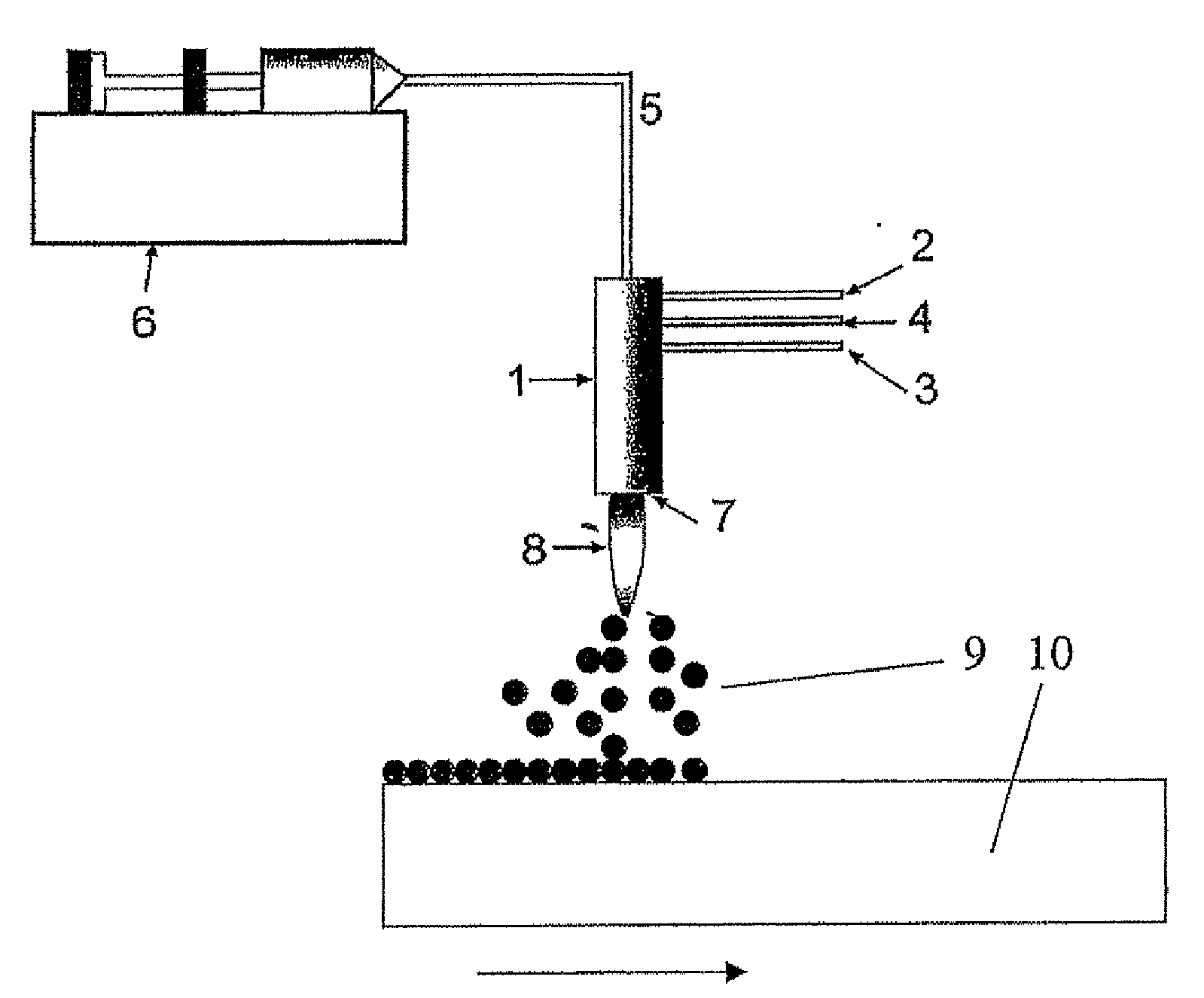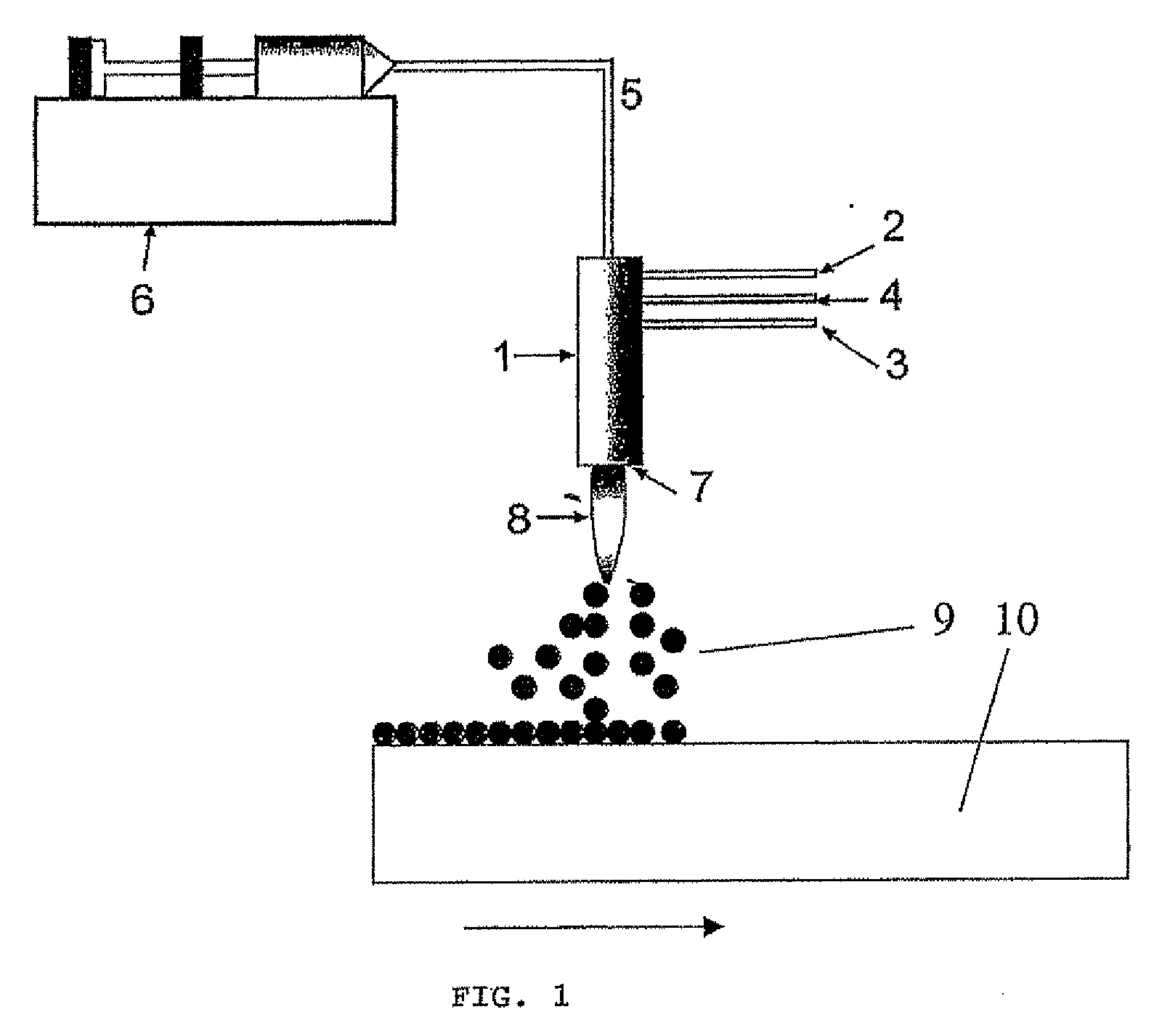Hydrophobic glass surface
a glass surface and hydrophobic technology, applied in the field of hydrophobic glass surface production, can solve the problems of inefficient dissolution and/or diffusion into glass for achieving desired objects, and achieve the effects of efficient dissolution and/or diffusion of nanoparticles, increased glass life cycle, and not easy to detach
- Summary
- Abstract
- Description
- Claims
- Application Information
AI Technical Summary
Benefits of technology
Problems solved by technology
Method used
Image
Examples
Embodiment Construction
[0016]The method according to the invention comprises forming a hydrophobic surface for glass or glazing. The method comprises producing particles having an average aerodynamic particle size of less than 200 nm using a prior art method for producing such nanoparticles. The particles are further guided onto the glass surface so that they at least partly dissolve and / or diffuse into the glass surface. The particles to be guided onto the glass or glazing surface are hydrophobic particles, and preferably hydrophobic glass particles. For example, fluoro-alloyed quartz glass may be used for this purpose. Furthermore, the melting point of the nanoparticles to be guided onto the glass surface in the method is preferably higher than the melting point of glass or glazing, in which case the particles may be prevented from totally dissolving into glass.
[0017]The method according to the invention is applied or generally used in a production process, production or treatment of glass or glazing, w...
PUM
| Property | Measurement | Unit |
|---|---|---|
| aerodynamic particle size | aaaaa | aaaaa |
| contact angle | aaaaa | aaaaa |
| contact angle | aaaaa | aaaaa |
Abstract
Description
Claims
Application Information
 Login to View More
Login to View More - R&D
- Intellectual Property
- Life Sciences
- Materials
- Tech Scout
- Unparalleled Data Quality
- Higher Quality Content
- 60% Fewer Hallucinations
Browse by: Latest US Patents, China's latest patents, Technical Efficacy Thesaurus, Application Domain, Technology Topic, Popular Technical Reports.
© 2025 PatSnap. All rights reserved.Legal|Privacy policy|Modern Slavery Act Transparency Statement|Sitemap|About US| Contact US: help@patsnap.com


